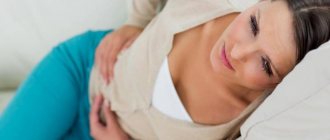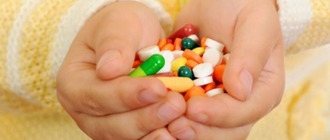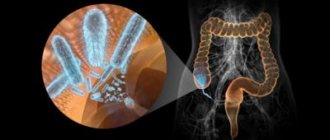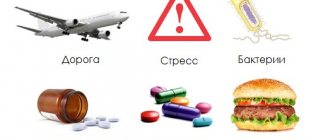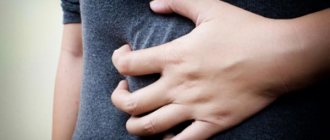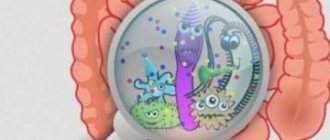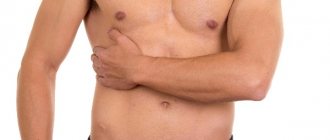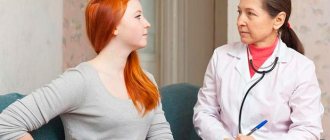Causes of diarrhea after antibiotics
And sometimes the reason is taking drugs belonging to the group of antibacterial drugs.
Why does diarrhea begin after antibiotics in an adult? What to do to ease suffering and get rid of the disease?
The development of diarrhea, or diarrhea, due to taking antibiotics is common. Even in the pharmacy instructions for the use of certain antibiotics, diarrhea is indicated as a side effect.
The thing is that when antibiotics are taken orally in the form of capsules or tablets, not only pathogenic bacteria are destroyed, but also beneficial ones that are responsible for the normal functioning of the intestines. As a result, the intestinal microflora changes, new strains of bacteria appear, provoking bouts of diarrhea.
In medicine, this side effect of antibiotics is called antibiotic-associated diarrhea (AAD).
Taking antibiotics should always be treated with extreme caution.
Don't miss one of the most useful articles about: Nagging pain in the lower abdomen in women - causes
The likelihood of developing a side effect such as diarrhea increases if:
- antibiotics were taken by older people;
- antibiotics are taken for existing acute and chronic diseases of the digestive system, as well as for other somatic diseases that lower immunity;
- treatment requires increased doses of antibiotics;
- the regimen for taking the drug is violated (the dosage dates are not followed, the drug is changed).
Diarrhea may begin on the first day of antibiotic treatment, as well as in the following days. If you experience loose stools, you should not panic, as there are treatment methods that alleviate the symptoms and bring the body back to normal.
Treatment of diarrhea
The appearance of diarrhea is observed at the beginning of antibiotic use and throughout treatment. To treat diarrhea, medication and folk methods are used. For recovery, an integrated approach is used, including the use of restorative drugs and a specially designed dietary regimen.
Diarrhea associated with antibiotic use should be treated promptly and in a timely manner. When the first symptoms appear, you should immediately visit a doctor. The most dangerous thing in such a situation is to treat yourself. Such actions are accompanied by complications in the form of side effects.
Measures to help with diarrhea
The human intestinal microflora is capable of self-recovery over time. But it is known that during diarrhea, bacteria are washed out of the body along with the excreted fluid, so the natural restoration of the flora can be slow.
How to treat diarrhea after taking antibiotics in an adult? What should you do to restore intestinal balance?
Treatment must be comprehensive; this is the only way to achieve recovery.
Dietary nutrition and proper drinking regimen
Viscous liquid porridges - semolina and pureed buckwheat, steamed omelettes, rice soups - will help normalize stool and improve intestinal motility in the first days of diarrhea . Jelly made from sweet berries and fruits is useful; they also have an astringent effect.
Liquid, viscous porridges help improve intestinal motility
Bananas containing pectin, baked apples, and boiled eggs should be on the menu daily. Bread should be replaced with unsweetened homemade crackers.
It is not recommended to consume foods containing fiber, baked goods , milk and dairy products. They can irritate the intestines and worsen bouts of diarrhea.
Bananas, baked apples, and boiled eggs containing pectin should be on the menu daily
Gradually, you can diversify the menu with steamed meat or fish cutlets, vegetable soups, crumbly porridges (except millet and pearl barley).
Yogurt is beneficial for intestinal flora and can be consumed daily from the first days of imbalance.
Yogurt is good for intestinal flora
The ban on eating bread is lifted a week after improvement.
Proper drinking regimen plays a major role in treatment. During this period, fluid intake should be increased to 3 liters per day. Both clean drinking water and unsweetened compote or diluted natural juice are suitable.
Fluid intake should be increased to 3 liters per day
Diarrhea after antibiotics: how to treat with folk remedies in an adult
Old herbalists suggest making and using infusions and decoctions of medicinal herbs to relieve symptoms, which have a sorbent and astringent effect, and also restore intestinal balance.
Recipes for infusions and decoctions:
- To prepare rice water, you need to cook half a glass of rice in 4 glasses of water until the rice is cooked until tender. Strain and drink 150 g every 3 hours.
- Infuse crushed oak bark and dry calamus leaves (equal parts) in 250 ml of boiling water for 45 minutes. Take 100 ml three times a day before meals.
- Boil 1 teaspoon of crushed dry pomegranate peels in a glass of water at a low boil for 5 minutes. Take 150 ml 15 minutes before meals.
- 4 tbsp. l. collection of dry herbs (3 parts plantain, lingonberry leaf, two parts rowan berries, mint herb and eucalyptus leaves), boil in a liter of water for 1 minute, strain after infusing for an hour. Drink 30 ml seven times a day.
Infusions of St. John's wort, yarrow, nettle, mint, and cinquefoil are considered a good way to increase local immunity. It is enough to brew a small amount of herb in a glass of boiling water, cool and drink the resulting infusion throughout the day.
Read the new article in the section: Gallstone disease: treatment without surgery and diet
If diarrhea occurs without inflammatory processes and is not accompanied by an increase in temperature, then folk remedies will help return the intestines to their previous mode of operation.
Treatment of diarrhea with medications
Medicines should be used under the supervision of a specialist . When seeking help at the clinic, it is important to inform the doctor about taking antibiotics. Then the doctor will explain how to treat diarrhea after antibiotics in an adult, and what to do to relieve acute symptoms.
Important! You cannot begin drug treatment without making a correct diagnosis. Only a doctor can prescribe medications to treat diarrhea.
First aid
First of all, in case of diarrhea caused by antibiotics, it is necessary to interrupt the use of the medicine. The method of treatment is influenced by the age of the patient. Depending on the age category, treatment differs:
- Infants. This age category requires emergency medical care. Especially when observing signs of dehydration: fainting, dry skin, weight loss, lethargy, weakness.
- Child under 18 years of age. You need to consult a local pediatrician who will prescribe a suitable treatment method. At a young age, the child’s gastrointestinal tract is not fully formed. In order not to cause complications, you should use only medications prescribed by your local doctor.
- Adults. If an adult has symptoms, you should also consult a doctor immediately. If the frequency of stools is less than five times a day, there is no suspicion of pseudomembranous ulcerative colitis, drink 1-2 capsules of Loperamide before taking it. After taking this drug, the condition significantly improves. Seeing a doctor is mandatory if you have symptoms: nausea, abdominal pain, fever, diarrhea that does not go away.
Pharmacy medicines
Medicines are prescribed by the attending doctor. An independent course of treatment can harm a person, causing complications. Prescribed drugs that normalize intestinal function due to the beneficial microflora they contain. The products prevent diarrhea and restore intestinal microflora. The doctor decides which medication to prescribe. The doctor is based on the presenting symptoms, diseases, and condition of the patient. The most effective medications:
- Loperamide. Prescribed for severe diarrhea. It is fast-acting. Available in the form of tablets, capsules and drops. It is allowed to be taken by children over 4 years of age and by women during pregnancy.
- Bifidumbacterin. A similar remedy, but the effect occurs after 2-3 applications. Suitable for treating children.
- Linux. One of the most popular treatments for diarrhea. It is distinguished by its effectiveness and safety. Effective from the first day of use.
- Imodium. A quick remedy to cure diarrhea, it helps within an hour after use. Available in tablets. It has contraindications: children under 6 years of age, pregnant and lactating women, individual intolerance to the components.
Traditional medicines
You can stop diarrhea with folk remedies. The most common is herbal medicine. For diarrhea, they mainly use: oak bark, cinquefoil, green tea. It is possible to make herbal tea from these ingredients. Take a few teaspoons of the component, pour boiling water over it for 10 minutes, wait until the drink cools down, then drink. Decoctions of nettle, yarrow, and St. John's wort help cope with the disorder by promoting an increase in microorganisms.
During loose stools, dehydration occurs and, therefore, the water balance is disturbed. Its recovery is based on saturating the body with water. You should drink up to 3 liters of water per day. It is advisable to remove fiber, flour, and fruits from your daily diet. The influence of the above products is undesirable in case of illness.
Probiotics and energy sorbents
Pharmacies offer a wide range of drugs that are successfully used in the treatment of diarrhea.
Based on their composition and mechanism of action, drugs are divided into the following groups:
- enterosorbents – drugs that have a sorbing effect;
- probiotics – they contain beneficial bacteria necessary for intestinal function.
Enterosorbent drugs retain and remove bacterial waste products and other toxins from the body. This group includes activated carbon, Smecta powders, Polysorb, produced in the form of a suspension Enterosgel . They absorb decay products and toxins, effectively cleansing the intestinal flora from pathogens.
The group of probiotics includes Linex , a well-known and widely used drug. It can quickly relieve the effects of antibiotic therapy. also deserves attention.
The course of treatment with probiotics lasts 2 weeks after the antibiotics are finished.
Unlike Linex, it contains 9 strains of living beneficial bacteria. Among other things, it has a healing effect, so it relieves the intestinal walls from wounds and ulcers formed during diarrhea. also buy probiotics Bifiform, Hilak Forte, and Bifidumbacterin at the pharmacy without a prescription.
The course of treatment with probiotics lasts 2 weeks after the antibiotics are finished.
The drug Loperamide is widely used to treat diarrhea. But it can only be used for mild or moderate illness. The effectiveness of this drug will increase if taken along with probiotics.
With severe diarrhea in adults after treatment with antibiotics, Loperamide can worsen the disease, as it reduces intestinal motility and slows down the elimination of toxins. Intoxication of the body may occur.
Drug treatment for diarrhea
For diarrhea caused by antibacterial therapy, drug treatment is resorted to. The following drugs are usually preferred:
- Linux. Results when taking this medication are achieved in 3-5 days. Linex is a probiotic, that is, its composition is represented by lacto- and bifidobacteria, which are part of the natural intestinal microflora. This drug is included in the treatment of both adults and children.
- Hilak Forte. This antidiarrheal drug can be taken at any age, even infancy.
- Bifidumbacterin. This drug normalizes intestinal microflora and is an immunomodulatory agent.
- Loperamide. This drug should be used only as prescribed by a doctor. It is contraindicated for pseudomembranous colitis and gastrointestinal infections. Loperamide can be taken at the same time as probiotics.
- Ersefuril. This drug is prescribed if there is an intestinal infection. The medicine provides an anti-inflammatory and antiseptic effect.
Due to dehydration of the body due to diarrhea, it is necessary to restore the water-salt balance. To do this, they usually resort to Regidron. Its dosage depends on the characteristics of the patient’s condition, as well as his age and weight (important for children).
If diarrhea is caused by pseudomembranous colitis, then discontinuation of the drug that led to the development of this pathology is necessary. A different antibiotic and antiprotozoal agent must be prescribed to reduce the number of the causative bacteria and stop its further growth.
With pseudomembranous colitis, it is necessary to remove waste products of the pathogen and toxins from the body. Enterosorbents are used for this. The most popular group of such drugs consists of activated carbon, Smecta, Enterosgel, Polysorb. When taken internally, these drugs absorb harmful substances and then excrete them along with feces.
A doctor should prescribe antidiarrheal drugs. He will determine the cause of diarrhea and the appropriate medicine in a particular case. It may be necessary to discontinue the antibiotic or replace it with another medication.
How to prevent the development of diarrhea
Is it possible to prevent diarrhea after antibiotics in adults, what to do to avoid negative consequences?
The possibility of developing diarrhea can be anticipated as soon as a course of treatment with antibacterial drugs is prescribed.
Note! Most often, diarrhea begins after taking antibiotics such as tetracyclines and aminoglycosides. The wider the spectrum of action of antibiotics, the more likely diarrhea is.
To reduce the likelihood of disturbances in the intestinal flora, it is necessary to start taking probiotics belonging to the group of symbiotics (Laminolact) simultaneously with antibiotics.
The bacteria contained in their composition help beneficial microorganisms tolerate the aggressive effects of antibiotics on the intestinal microflora. During this period, you can include yogurt and low-fat kefir in your daily diet and exclude fried, fatty and smoked foods.
Such complex therapy will help maintain the intestinal microflora in working condition.
You might be interested to know about: Quick-acting laxative in tablets
An equally important rule is strict adherence to the dose of prescribed antibiotics. Compliance with the medication regimen will prevent an overdose and reduce the risk of unpleasant consequences.
Nutrition
Basic principles
- Fragmentation - food intake should be frequent and the volume small. Optimally – about 200 ml (glass) every 3 hours.
- Adequate caloric content - for a healthy person ranges from 2000 calories per day. During the recovery period, it is advisable to avoid physical and emotional stress.
- Ballast substances or fiber are not digested and have no energy value, but ensure the movement of the food bolus. They begin to consume fiber after the diarrhea stops. The best “ballast” is dried prunes and dried apricots, as well as coarse vegetables (beets, broccoli).
- Viscous dishes - mashed potatoes and porridges, dishes with tannin - tea, cocoa, blueberries, bird cherry.
- Refusal of alcohol, soda, fast food, snacks, canned food and marinades, confectionery.
Be sure to read:
Malabsorption syndrome: definition and treatment recommendations (diet, medications)
Products
| Recommended Products | Not Recommended Products |
|
|
Signs of pseudomembranous colitis (how to distinguish it from another type of diarrhea)
Pseudomembranous colitis is a severe form of intestinal disorder associated with antibiotic use. This disease is fatal to humans and is caused by the proliferation of microbes of the species Clostridium difficile.
With normal functioning of the intestine, the proliferation of these microorganisms is blocked by other bacteria living in the intestine. When the intestinal microflora is suppressed by antibiotics, beneficial bacteria die, which leads to the growth of a pathogenic environment.
The proliferation of Clostridium reaches a critical level, and their waste products poison the intestines.
Pseudomembranous colitis can be recognized by the following symptoms:
- increased diarrhea, the frequency of attacks increases up to 20 times a day;
- initially liquid stool becomes watery with the inclusion of clots of mucus and sometimes blood, changes color to greenish, and acquires an unpleasant odor;
- body temperature rises;
- cuts the stomach;
- attacks of vomiting and nausea appear;
- the body becomes weak.
Diagnosis of pseudomembranous colitis is carried out using biochemical analysis. If the disease is confirmed, then antibiotics are prescribed that can kill pathogenic microorganisms.
Causes of diarrhea after taking antibiotics
Antibacterial therapy can provoke diarrhea for several reasons:
- Some antibiotics have a laxative effect due to increased intestinal motility. This effect is inherent in some macrolide drugs. In this case, diarrhea is mild and stops after taking the antibiotic.
- The main cause of diarrhea after antibiotic therapy is intestinal dysbiosis. Antibiotics have a strong effect, but they destroy not only pathogenic microorganisms, but also lacto- and bifidobacteria necessary for the intestines. As a result, an imbalance of intestinal microflora develops, to which the body reacts with diarrhea.
- Antibacterial therapy can lead to inhibition of the growth of normal intestinal microflora or cause the growth of pathogenic microorganisms in certain areas of the organ. This undesirable effect can be caused by tetracycline drugs or aminoglycosides.
- Pseudomembranous colitis. This pathology can develop during antibacterial therapy due to the death of beneficial bacteria. It is caused by bacteria of the genus Clostridium. In this case, the person suffers from severe diarrhea, accompanied by weakness, pain in the abdomen and fever.
The risk of diarrhea during antibiotic therapy depends on the type of medication used. More often, diarrhea is caused by treatment with amoxicillin or cefixime.
Diarrhea is usually caused by oral antibiotics, although this side effect can also occur after parenteral or transvaginal use.
The likelihood of developing diarrhea during antibiotic therapy increases with age. The risk group also includes the presence of the following factors:
- taking antibiotics in high dosages;
- the presence of acute or chronic pathology of the digestive system;
- somatic diseases that reduce immunity;
- Violation of the medication regimen (replacement of the drug, failure to comply with the dosage schedule).
Who's at risk
The development of consequences is most likely in the following cases:
- elderly age;
- if there is a chronic or acute disease that reduces immunity;
- if laxatives were taken simultaneously with antibiotics;
- if a person cannot eat on his own, he is fed through a tube;
- if antibiotics are taken during pregnancy or lactation;
- if antibiotics are taken with anti-cancer drugs;
- if the patient is HIV infected.
Diagnostic methods
The following methods are used to confirm the diagnosis:
- Examination of the patient and taking an anamnesis. If intestinal upset occurs during the use of antimicrobial agents, you must inform your doctor about it.
- Coprogram. Used to assess intestinal functionality.
- Stool culture. Prescribed for complicated, prolonged diarrhea in order to determine which pathogens are causing the disorder. The analysis takes a long time and is used only in the presence of complications.
Note! Only a doctor can make an accurate diagnosis. Self-diagnosis can lead to incorrect treatment and the development of complications.
How to protect your family and friends from infection
Pseudomembranous colitis is an infectious disease, so those around you need to take measures to protect themselves from infection.
It is necessary to allocate items for personal use for the patient and limit his use of common items
The infection is transmitted through the use of shared objects, so they should not be made available to the patient. If an adult in the family has diarrhea after taking antibiotics, you need to immediately begin preventive measures, which will minimize infection of other family members.
Personal hygiene items must be individual
It is necessary to allocate items for personal use for the patient and limit his use of common items.
Bed linen, towels, dishes, and personal hygiene items must be individual. After use, patients need to wash dishes in hot water, and then additionally pour boiling water over them. The room requires constant ventilation and wet cleaning.
Recovery occurs if vomiting and diarrhea do not appear even once within 2 days.
The effect of antibiotics on intestinal microflora
Antibiotics can act in several ways:
- inhibit the synthesis of proteins necessary for the normal functioning of cells;
- suppress the synthesis of nucleic acids that transmit hereditary information to new cells;
- disrupt the formation of cell walls, which leads to the non-viability of new bacteria;
- inhibit respiratory enzymes, which are necessary for gas exchange of bacteria.
Taking antibiotics not only has a detrimental effect on pathogenic bacteria, but also affects susceptible beneficial microflora. Because of this, the bacterial balance in the intestines changes, which leads to diarrhea. Doctors call this disorder “antibiotic-associated diarrhea.”
When a doctor's help is needed
Despite the fact that diarrhea can often go away on its own and not cause serious consequences, in some cases its manifestation requires urgent attention from a doctor.
If diarrhea begins while taking antibiotics, then everyone needs to consult a doctor, but especially pregnant women, patients with kidney or heart failure, cancer patients, and HIV-infected people.
Calling a doctor is necessary if:
- intestinal upset gets worse over time;
- cramps and cramps occur in the abdomen;
- the temperature rises against the background of general weakness of the body;
- stool is a green liquid with traces of mucus and blood.
It is important to know! Self-medication in the above cases is dangerous. Lack of qualified assistance can lead to irreversible consequences.
If the temperature rises and general weakness, a doctor must be called
Only the correct dose of medication selected by a doctor will help to avoid consequences such as diarrhea after antibiotics in an adult. Only a specialist can advise what to do in such cases.
In most cases, diarrhea can stop quickly with proper treatment. In some cases, it can develop into pseudomembranous colitis, a severe infectious disease that can be fatal if left untreated.
Dr. Komarovsky will tell you how to carry out rehabilitation after taking antibiotics:
What drugs can restore the intestinal microflora after taking antibiotics:
Dr. G. Grossman will tell you how to restore the intestines after taking antibiotics:
Methods for restoring intestinal microflora
This should be done on the recommendation of the attending physician, while simultaneously taking a stool test for dysbiosis. You need to start the course only after you finish taking antibiotics, otherwise it is useless. When the analysis answer comes, the drugs to restore the microflora can be adjusted.
The pharmacy chain sells 3 groups of drugs for this: pro-, pre- and synbiotics. The purpose and effect of the drugs are different.
Probiotics
Main article: Probiotics
Specially selected strains of live intestinal bacteria that live in the intestines of a healthy person. Their functions: breakdown and digestion of food, production of vitamins, synthesis of lactic acid, which stops the growth of pathogenic microorganisms. Probiotics perfectly neutralize toxic substances and protect the body from infection.
Pharmacies sell both official (registered in the state pharmacopoeia) drugs and dietary supplements. It is better to give preference to drugs, since they undergo a full cycle of clinical trials, first on animals and then on volunteers. Their action has been fully studied and the results are guaranteed.
All drugs in this group are produced in a shell that is resistant to the action of gastric hydrochloric acid, so that the bacteria reach the intestines alive.
All probiotics can be divided into 4 generations:
- The first generation - Linex, Rioflora, Bifiform, Polybacterin, Biovestin-Lacto, Symbiolact Compositum, Bifido-Normalizer, Flora-Dophilus. The group contains lacto- and bifidobacteria, as well as enterococci. A distinctive feature is the sorbed state of bacteria, when their life cycle resumes after entering the intestinal lumen. Reliable and time-tested products that do an excellent job of colonizing the intestines.
- Second generation - Sporobacterin, Baktisubtil, Enterol - fungi (protozoa) were added to the previous composition. When these drugs were created, the beneficial role of mushrooms was known, but the question remained unclear until the end.
- Third generation - Atsilakt, Linex-Forte, Atsipol, Linex-Immuno - the number of mushrooms has been increased. The drugs appeared after the role of two substances was studied: the proteins CARD9 and Dectin-1. These proteins recognize and separate “harmful” mushrooms from “good” ones. To date, more than 200 species of fungi that are normal inhabitants of the intestines have been studied. Many studies indicate that irritable bowel syndrome or IBS is caused by those mushrooms that do not contain these two proteins. Antifungal drugs are the fastest way to recovery from IBS.
- The fourth generation - Probifor, Bifidumbacterin, Florin - the composition is enriched with activated carbon, which adds detoxifying properties.
For successful treatment you need to take medications for at least 2 weeks. If the stool remains unstable, it is better to take the medications for a full month.
The microflora cannot be restored at once, some of the “settlers” die, others need time to reproduce and adapt to specific living conditions.
Be sure to read:
How is rotavirus intestinal infection manifested and treated?
Prebiotics
Main article: Prebiotics
These are substances that reach the colon unchanged. They ferment in the large intestine, providing nutrients for lacto- and bifidobacteria. These are milk and soy proteins, various saccharides, amino acids, enzymes, fatty and organic acids.
You don't have to use drugs to "feed" the beneficial bacteria. Prebiotics are found in food products, primarily fermented milk, the best of which are one-day kefir or natural yogurt. Daily consumption of only these products will ensure stable digestion at any age.
There are many prebiotics in bread and cereals, cornflakes, onions, chicory, peas and beans, garlic and asparagus, bananas.
The pharmacy chain sells the following medications:
- Based on lactulose or a synthetic analogue of milk sugar - Normaze, Lizalak, Duphalac, lactulose syrup, Proslabin, they are sold as laxatives.
- Hilak-forte drops contain lactic acid, buffer salts and metabolic products of normal microflora. The drug creates optimal conditions for bacteria to form colonies, while simultaneously restoring the mucosa.
- Dietary supplements that practically do not differ in properties from drugs - Lactusan, Lactusan DUO, Prelax, Maxilak, Eubicor and the like.
Synbiotics
Main article: Synbiotics
The preparations contain both pro- and prebiotics, which ensures the fastest possible colonization of the intestines with normal microflora.
- Bifilis is a lyophilisate for preparing a suspension, consisting of bifidobacteria and lysozyme or an antibacterial substance;
- Dietary supplement Normobakt (Poland) – powder in a sachet, consisting of lactobacilli, maltodextrin, oligosaccharyls and silicon dioxide;
- Vitabs BIO dietary supplement with bifidobacteria;
- Bactistatin dietary supplement – gelatin capsules: bacterial culture liquid, soy flour hydrolyzate and zeolite.
Treatment of a child
The basic principles of treating diarrhea in a child are the same as in adult patients. But the risk of dehydration is higher in one-year-old infants and infants. If the baby is breastfed, he should be placed on the mother's breast as often as possible. Breast milk performs several functions at once: it restores moisture reserves in the body, provides it with nutrients and strengthens the immune system.
For acute diarrhea in a child, the doctor may prescribe StopDiar (from 7 years), Klacid and Acipol. It is prohibited to treat diarrhea on your own with tablets, syrups or traditional methods.
Taking medications
The next step is taking enterosorbents. Solving a problem caused by medications with other medications will seem absurd to some. But enterosorbents are a group that is able to absorb, bind and remove toxins left in the gastrointestinal tract by antibiotics. This will be followed by probiotics and fermentations that will restore the environment. In parallel, you can use auxiliary folk methods.
Table. Drugs for the treatment of diarrhea after antibiotics.
| Group of drugs | Name of drugs | Action |
| · Activated carbon; · "Enterosgel"; · "Polysorb"; · "Smecta"; · "Lingin"; · "Neosmectin". | This group of drugs contains components that can attach toxins, deactivate them and remove them from the body through bowel movements. Substances with similar effects are found in food products: bran, vegetables, algae, fruits. | |
| · "Linex"; · “Bifidumbacterin”; · "Hilak-Forte"; · "Lactobacterin". | Needed to reanimate the intestinal mucosa and normalize its activity. These are microflora restorers, which can also be either tableted or natural. For example, probiotics are found in fermented milk products. But it is better to take probiotic preparations after diarrhea from antibiotics for a quick and effective effect. | |
| · "Loperamide"; · "Ftazol"; · "Enterobene"; · "Imodium". | Medicines from this group contain enzymes that inhibit peristalsis, normalizing the consistency and frequency of stool. They should be taken only as prescribed by a doctor. | |
| · wormwood; · walnut partitions; · alder bark; · sage; · Linden blossom; · St. John's wort; · Oak bark; · cinquefoil. | Herbal remedies are used in the form of teas and decoctions. |
Medicines
Probably the most frequently prescribed drug that can eliminate such a side effect after taking antibiotics as diarrhea is Imodium. Thanks to the active substances included in its composition, diarrhea can be stopped within 40-50 minutes after taking the drug. It is due to the rapid action of the drug that general dehydration of the body can be prevented.
Imodium is an effective remedy for quickly getting rid of diarrhea
The drug Imodium is prescribed for intestinal infections. Among the contraindications, it is worth highlighting children under 6 years of age, pregnancy, especially the 1st trimester, as well as the lactation period. The initial daily dosage of the drug for children is 2 mg, and the maximum for an adult is 16 mg.
Severe diarrhea that occurs while taking antibiotics, but does not occur due to a bacterial infection of the intestines, can be cured with the help of a drug such as Loperamide. The drug is not prescribed to children under 4 years of age, in the 1st trimester of pregnancy and with the development of pseudomembranous colitis. The maximum daily dosage for adults is 16 mg, and for a child - 6 mg for every 20 kg of weight.
In the treatment of antibiotic diarrhea, a drug in powder form such as Smecta is also used.
Its effect is almost immediate after taking the solution orally. Contraindications include intestinal obstruction and hypersensitivity to fructose. An adult can drink up to 3 packets per day, the same as children over 2 years of age. For children under 2 years of age, the product should be used in a dosage of no more than 2 sachets per day, and for children under 1 year of age - no more than 1 sachet.
Another, no less effective, drug for the treatment of diarrhea caused by antibiotics is Bifidumbacterin. The drug comes in such forms as tablets, suppositories, capsules, and powder. Bifidumbacterin in powder form is recommended to be diluted in unsweetened kefir or yogurt (1 sachet per 1 glass of liquid) and taken before eating. Among the contraindications, it is worth highlighting only individual intolerance to the drug. The dosage is prescribed by the doctor.
Treatment options
Diarrhea that occurs while taking antimicrobial agents can be stopped both during and after taking antibiotics. It is preferable to treat diarrhea with medications.
Folk remedies are a common cause of an allergic reaction or a deterioration in the patient’s condition.
Drug treatment
Loose stools after taking antibiotics can be cured using several groups of drugs:
- Enterosorbents. Binds toxins of pathogenic bacteria and neutralizes their negative effects. Examples of such agents include Smecta, Imodium, Loperamide, Enterosgel, activated carbon, Sorbex. These are the most popular anti-diarrhea pills.
- Intestinal antiseptics. They help reduce the number of pathogens in the intestines (Enterofuril, Enterol, Nifuroxazide).
- Anti-bloating agents (Imodium, Domperidone).
- Probiotics. Preparations containing lactobacilli that help restore normal microflora (Linex, Bifidumbacterin, Bifiform, Acipol).
To correct the frequency of bowel movements, lactulose preparations (Duphalac, Normaze) are prescribed.
But such drugs have negative side effects: 2-3 days after the start of use, they provoke increased gas formation and bloating, therefore, in case of diarrhea caused by the use of antibiotics, the advisability of taking lactulose is determined by a specialist.
If diarrhea is severe, the doctor may adjust the dosage of the antibiotic or stop the medication.
It is not advisable to change the daily dosage on your own or completely stop taking the drug, as this may cause an exacerbation of the primary infection, for the treatment of which the antibiotic was prescribed.
Folk remedies
Treatment with folk remedies for intestinal disorders requires prior consultation with a doctor. For therapy, herbs with a high content of tannins are used.
These components inhibit the proliferation of pathogenic microorganisms, and therefore can be used to normalize microflora:
- St. John's wort. 2 tbsp. dry herbs, pour a glass of boiling water and let it brew for half an hour. Take 100 ml 4 times a day.
- Blueberry. 2 tbsp. Pour a glass of boiling water over the dried berries and let it brew for 10-15 minutes. Take 1 tbsp. infusion every hour.
- Sagebrush. 1 tbsp. dried herbs pour a glass of boiling water. Leave for 15-20 minutes. Drink the folk remedy 50 ml 4 times a day.
When treating with both medications and folk remedies, one of the most important recommendations is compliance with the drinking regime. You need to consume at least 1.5-2 liters of clean water per day.
Proper nutrition and drinking regime
Human nutrition plays an important role in eliminating antibiotic diarrhea. The diet should contain only those foods that do not burden the intestines and do not cause fermentation and putrefactive processes in it. Experts recommend lowering caloric intake by reducing the consumption of fatty foods and foods containing carbohydrates.
You need to eat often, but in small portions. Ideally, the break between meals will be 3-4 hours. Eating solid food is prohibited. It should be ground and semi-liquid, boiled or steamed. On the first day of diarrhea, it is recommended to completely avoid consuming any food and drink only liquids, such as tea.
On the second day, the diet can be varied with rice porridge, cooked without adding oil, blueberry jelly and white breadcrumbs. The following foods will be beneficial for the intestines during the development of antibiotic diarrhea:
We recommend reading:
How to cure intestinal dysbiosis
- mashed potatoes;
- thin soup;
- baked apples;
- chicken eggs;
- saltine crackers and biscuits.
As for prohibited foods for diarrhea, these include:
- smoked meats;
- carbonated drinks, alcoholic products;
- roast;
- marinade and pickles;
- citrus;
- baked goods and confectionery products;
- nuts;
- legumes;
- dairy products.
Switching to regular food consumed before the development of diarrhea is allowed only after 5–7 days. As soon as the stool has returned to normal, you can include steamed cutlets, low-fat broths, vegetable soups, and cottage cheese in your diet.
The volume of liquid consumed per day should not be less than 1.5 liters
Diet food
Diet plays an important role for speedy recovery. The essence of the diet: during the week you should eat certain foods in small portions every 3 hours. In the first stages, drink large amounts of water and herbal teas (see above). It is advisable to stick to a food list that includes:
- fermented milk products;
- boiled eggs;
- baked apples;
- vegetable puree;
- jelly;
- crackers;
- buckwheat, rice porridge;
- vegetable soups;
- dietary meat.
The following foods should be excluded from your daily diet:
- fiber;
- semi-finished products;
- margarine;
- sausages;
- canned food;
- all kinds of sweets.
The diet is followed until signs of the disease completely disappear.
